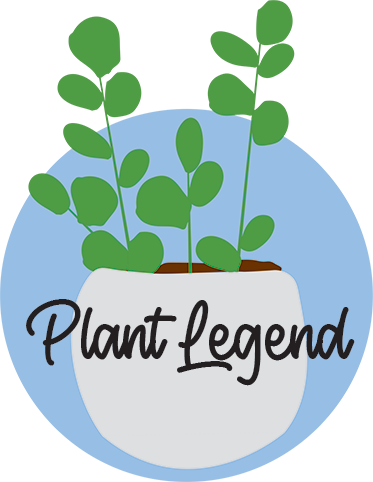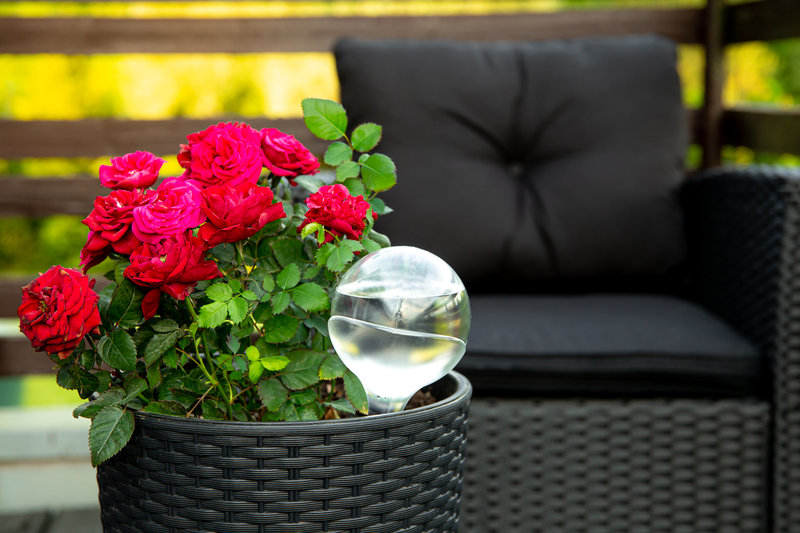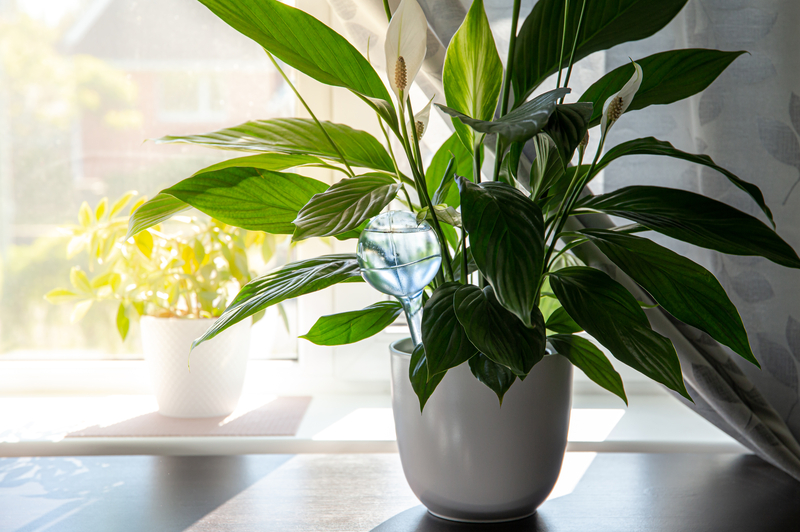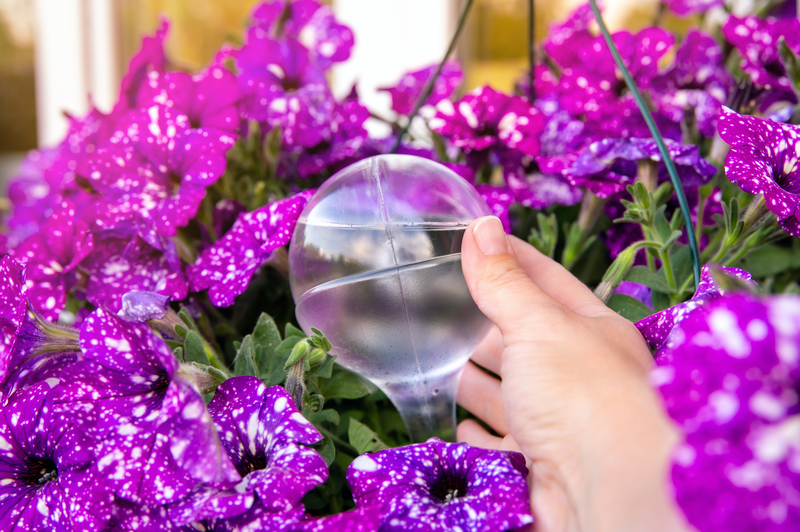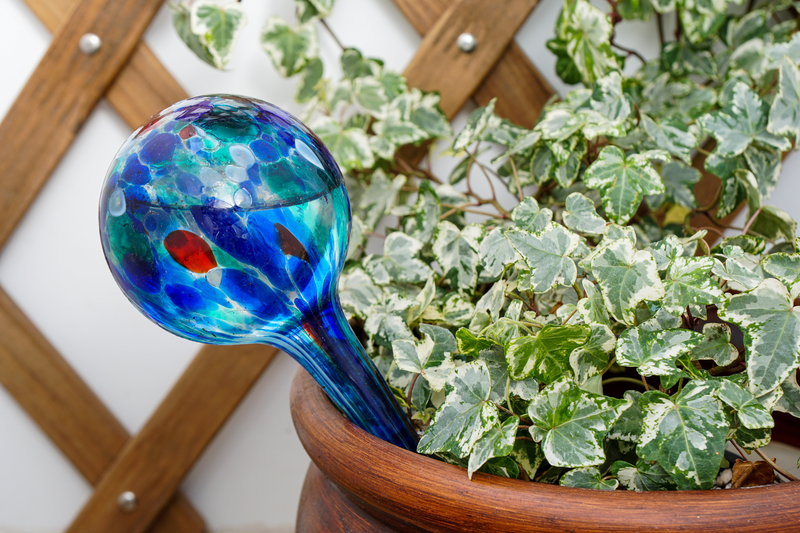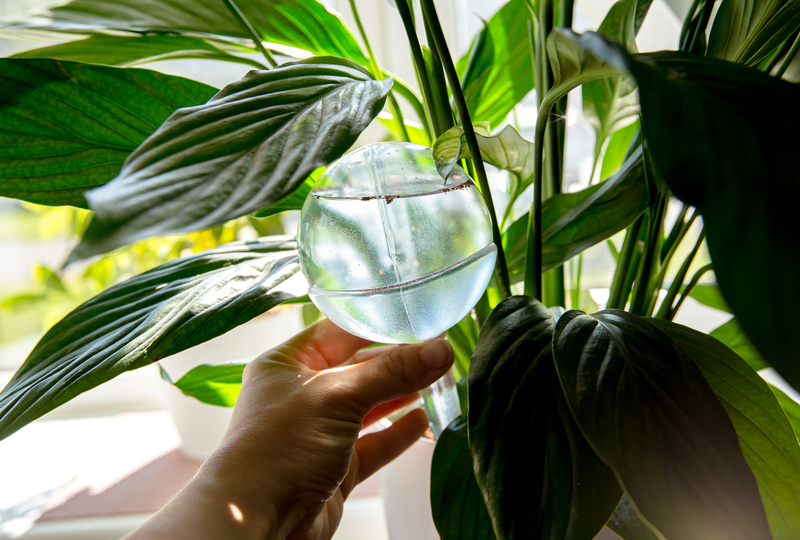Using a self-watering globe to water plants is an excellent idea when you are away for a week or two. This watering system gives your plants a slow and steady trickle of water, which can help keep the soil moist and the plant happy. However, while plant watering globes work well, plant owners should know about some cons before using this method.
So, can you overwater indoor and outdoor plants using a watering globe? How long do watering globes tend to last for plants, and how often do you need to refill them? How should you clean them so they won’t have mold or dust if they get dirty? Finally, what are the pros and cons when using plant watering bulbs for your plants?
Here is the complete breakdown of using self-watering globes for your plants.
What are the Pros of Using Self-Watering Globes for Houseplants?
One pro of using this type of water system is that it gives a small amount of water over a week or two, which means most plants will be happy while you are on vacation by getting water. Another pro of using this type of water system is that it keeps the soil moist and not soggy for most plants, which reduces the risk of root rot in the potted plant.
Another pro of using glass bulbs in your plants is that you can be a beginner in plant care to use them. The process is straightforward for beginners to utilize, which means the barrier to entry is low. Unlike some plant care methods, using glass bulbs is a simple process to water your plants.
Finally, buying or making your own DIY self-watering system makes this a popular choice for watering plants while you are on vacation. Purchasing these isn’t too expensive, and making them is pretty simple and doesn’t cost anything extra. All you need is an old water, soda, or wine bottle and poke a small hole in the cap to allow the water to release into the soil slowly. Just clean these old bottles before putting them into your plant’s soil. Taking your ready-to-be recycled bottles and making them into water globes is a green way to limit your carbon footprint.
What are the Cons of Using Self-Watering Globes for Houseplants?
The primary con of using self-watering globes for houseplants is that not all plants need the same amount of water. For instance, watering globes on a cactus or succulent might give these plants more water than they need, leading to root rot. If you use the same size watering globe and water for all plants, you will realize that not all plants need the same amount of water. Some might require more than others, so this process involves trial and error before you leave for vacation to make sure you will have success.
Another con of using a self-watering globe is the risk of clogging it in the plant’s soil. Even though beginners can use this water method, you want to avoid jamming the globe into the soil, so be mindful if this is your first attempt. By doing so, you might clog the water opening for the pipe, which means the water won’t be able to get into the soil. When that happens, your plants won’t be able to get the water that is in the glass tube.
Finally, another con of using self-watering globes is that they can become dirty and grow mold without proper cleaning. It is best to clean this type of water system after each use to ensure you are using clean water globes. Finally, when cleaning these globes, it is common for them to break since they are wet and might slip out of your hand, which can lead to a frustrating experience if you just bought them. Be careful when cleaning these glass bottles to ensure you can use them for future use.
Can You Overwater Plants with Watering Globes?
While water globes give a trickle of water to plants, they can still overwater specific types of plants. You risk overwatering them when you water globes on plants like a succulent or cacti. If you plan to use these watering globes on these plants, give them half or so of water compared to what you give other plants.
How Long Will a Self-Watering Bulb Last with Water?
Most self-watering bulbs that you buy can last about one to two weeks. However, if you have a giant plant that requires more watering than a little money or a rubber tree, consider making your own DIY from a water bottle. You want to experiment with different size glass watering globes for your plants before you go on vacation to see how long the water will last and if the soil moisture level is sufficient for that plant when using this method.
One tip to consider is the time of the year you will use a watering globe on your plant and how much sunlight it gets. If you have a plant that needs a few hours of direct sunlight in the growing season, use two watering globes instead of one while on vacation. Using two water globes ensures that the plant will get more water, which it will need if it is in direct sunlight for numerous hours daily.
On the other hand, if you have a plant in an area with indirect sunlight and it is the offseason, consider only using one watering globe and experiment with using less than full capacity. A watering schedule detailing what plants should get (X) amount of water during the growing and non-growing seasons can help you with how much water to put into the aqua globes.
How Often Do You Refill Watering Globes?
Generally speaking, most water globes need refilling every one to two weeks. If you have numerous plants or vegetables using globes as their primary water system, you should check on them to ensure they have water in them. During the growing season and warmer months, plants tend to drink water faster, so use a watering schedule as a reminder to check on them more often than you need in the winter.
How Do you Clean an Aqua Globe to Remove Mold, Soil, and Dust?
After regular use, potting soil, mulch, dust, and mold may end up in aqua globes. Here are the steps to ensure that the aqua globe is ready for subsequent use without these leftover materials.
- Run warm water into the globe and dump out any soil, mold, or anything else in the glassware. You can also shake this globe with water to give it more pressure to remove any mold or dust caked onto the sides of the tube.
- Use a pipe cleaner (or another type of miniature brush) to remove any leftover material around the glass.
- For a deeper clean, you can use warm water, lemon juice, and baking soda to rinse the globe after using the pipe cleaner. Using lemon juice, water, and baking soda is a good idea after using the pipe cleaner as a final attempt to sterilize the glass.
- Use a soft cloth to dry the outside of the globe and set it aside to air dry.
- After drying, examine if there are any leftover particles inside the globe. If there are, you should repeat steps 1-4 to give it another cleaning cycle.
Conclusion: Do Self-Watering Globes Work?
In summary, a self-watering globe can work well for certain plants when you cannot water them during their regular watering schedule. Most of these globes tend to be cheap to buy, and you can make your own DIY watering system from bottles, which means it is a relatively inexpensive plant care item to have in your household. Also, you can set up multiple self-watering globes in your vegetable garden while you are on vacation, especially if you know it won’t rain while you are gone.
However, while there are pros to using a self-watering globe, there are cons. First, not all plants need the same amount of water, so giving too much water to plants, like a cactus or succulents, can lead to overwatering them. The overwatering of these types of plants can cause issues like root rot, which then becomes a bigger problem for them. Another issue with this system is using a dirty globe on your plant, which could lead to bacterial problems. Finally, these globes tend to break easily, so be careful when cleaning them.
Finally, self-watering globes come down to the preference of the plant owner. Like any watering method, it comes down to trial and error and what works best for your plants!
Similar Posts:
How to Get Rid of Gnats in Plants Naturally
Is Bong Water Good for Plants?
Are Grow Lights Good for Plants?
What Flowers Represent Strength?
How to Keep Cats out of Plants
Is Epsom Salt Good for Plants?
Why is Plant Propagation Important?
How to Keep Deer from Eating Your Plants and Vegetables
Can You Bring Plants on a Plane?
What Does Plant Division Mean?
Is Rice Water Good for Plants?
